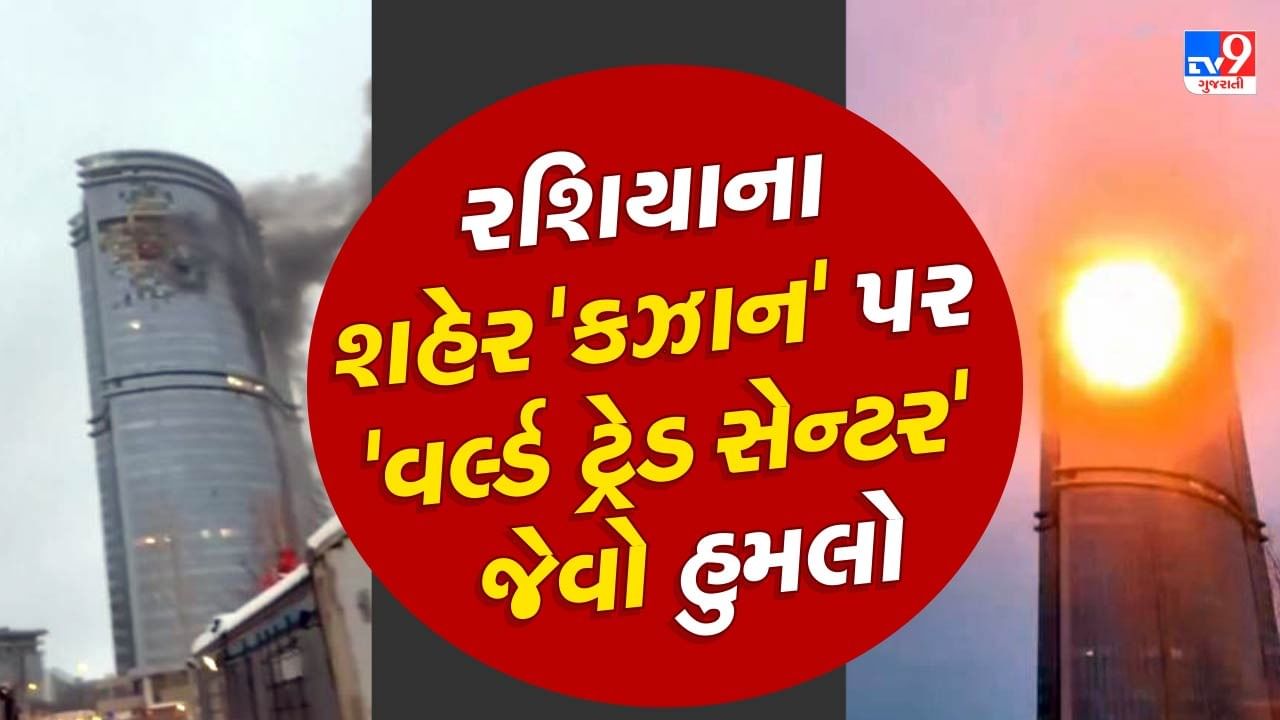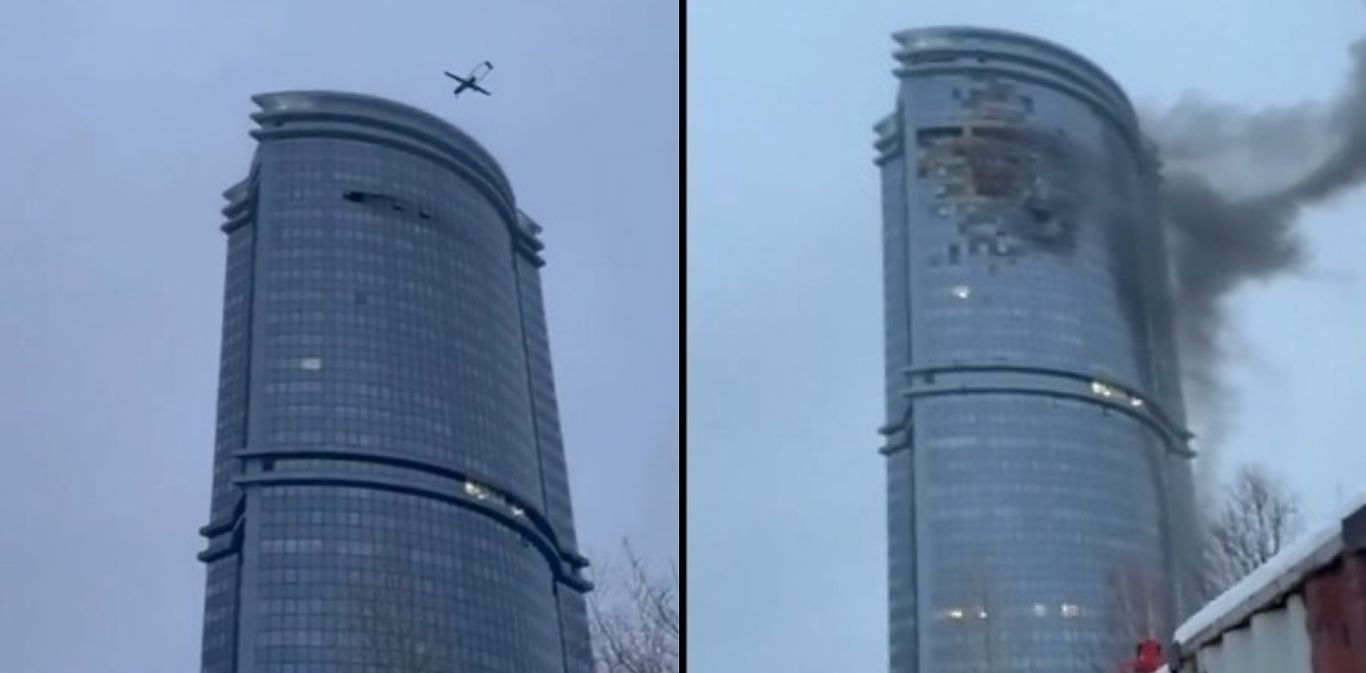Kazan drone attack immediately thrusts us into a complex narrative, blending technological advancements with geopolitical tensions. This incident, shrouded in uncertainty, demands a careful examination of the circumstances, the technology employed, and the far-reaching implications for regional stability and international relations. We delve into the reported damage, analyze potential motivations, and explore the ongoing investigations, seeking to illuminate the events surrounding this significant occurrence.
The analysis will encompass a detailed timeline, an assessment of the drones’ capabilities, a review of media coverage and its potential biases, and an exploration of the legal and security challenges posed by such attacks. We will also consider the potential for escalation and the responses from various stakeholders, including Russia and the international community.
The Kazan Drone Attack: An Analysis
The alleged drone attack on Kazan, a significant city in Russia, presents a complex event demanding thorough investigation and analysis. This examination will delve into the event’s circumstances, technological aspects, geopolitical implications, media portrayal, legal ramifications, and necessary security enhancements.
The Event: Kazan Drone Attack Overview

Reports emerged of a drone attack targeting Kazan, though specifics remain under investigation. The incident allegedly involved multiple drones, potentially impacting civilian and/or infrastructure targets. Initial reports varied concerning the extent of damage and casualties, highlighting the challenges in obtaining reliable information during such events. A precise timeline is still being pieced together, but the sequence of events, from initial reports to the ongoing aftermath, requires careful consideration of multiple news sources and official statements (if any).
The recent drone attacks on Kazan highlight the increasing sophistication of unmanned aerial vehicles. Understanding the capabilities of such technology requires examining advanced imaging systems, like those found in the high-resolution cobequid pass camera , which offer insights into potential surveillance and targeting methods. This technology, while beneficial for various applications, also raises concerns regarding its potential misuse in future conflicts, similar to what was seen in the Kazan incident.
The lack of official confirmation and the inconsistencies in initial reports underscore the need for thorough investigation.
| Entity | Alleged Role | Evidence Presented | Supporting Information |
|---|---|---|---|
| (Entity 1 – Example: Alleged Drone Operator) | (Role – Example: Launching and piloting the drones) | (Evidence – Example: Drone flight path data, eyewitness accounts) | (Supporting Information – Example: Links to known extremist groups, prior drone activity) |
| (Entity 2 – Example: Potential Backer/Sponsor) | (Role – Example: Funding and logistical support) | (Evidence – Example: Financial transactions, communication intercepts) | (Supporting Information – Example: Known affiliations with anti-Russian groups) |
| (Entity 3 – Example: Russian Authorities) | (Role – Example: Response and investigation) | (Evidence – Example: Official statements, security measures implemented) | (Supporting Information – Example: Level of preparedness for such attacks) |
| (Entity 4 – Example: International Organizations) | (Role – Example: Monitoring and assessment) | (Evidence – Example: Public statements, reports from international observers) | (Supporting Information – Example: Previous involvement in similar conflicts) |
Technological Aspects of the Attack
The drones involved were likely commercially available models modified for enhanced range, payload capacity, and potentially autonomous flight capabilities. Navigation and targeting could have involved GPS coordinates, pre-programmed flight paths, or even real-time operator control via remote links. Countermeasures such as drone detection systems, jamming technology, and anti-drone weaponry could have mitigated the attack’s effectiveness, but their deployment and efficacy remain uncertain.
The recent Kazan drone attack highlights the evolving threat of unmanned aerial vehicles. This incident underscores the need for robust counter-drone measures, a stark contrast to the dazzling spectacle of a coordinated drone display, such as the one showcased at the orlando drone show. Understanding both the destructive potential and the impressive capabilities of drones is crucial for navigating this complex technological landscape, particularly in the wake of events like the Kazan attack.
Further analysis of the drones’ wreckage (if recovered) is crucial.
- Vulnerability to GPS jamming
- Susceptibility to signal interception
- Limited flight range and endurance
- Predictable flight patterns (depending on the level of sophistication)
- Physical fragility and susceptibility to damage
Geopolitical Context and Implications, Kazan drone attack
The potential motivations for such an attack are multifaceted, ranging from expressing dissent against the Russian government to attempts at destabilization. Comparisons with other drone attacks globally, such as those in Ukraine or other conflict zones, can reveal similarities in tactics, technology, and potential motivations. The international response will depend on the verified scale and nature of the attack and the assigned responsibility.
A lack of clear attribution could lead to increased regional tensions and complicate international relations.
One possible scenario involves Russia’s response ranging from increased internal security measures to potential retaliatory actions, depending on the identified perpetrators. The international community might issue condemnations or impose sanctions, contingent upon the evidence and the level of international consensus regarding the attack’s origin and intent.
Media Coverage and Public Perception
Media coverage of the Kazan drone attack has varied significantly across different news outlets, reflecting pre-existing biases and political agendas. Initial reports were often fragmented and lacked complete details, fueling speculation and conflicting narratives. Public perception, initially marked by shock and uncertainty, has evolved based on subsequent information and official pronouncements (or lack thereof).
The prevailing public sentiment appears to be a mixture of concern, anger, and a demand for transparency and accountability regarding the incident and its aftermath.
The recent drone attack on Kazan highlights the evolving nature of modern warfare, showcasing the potential for both devastating attacks and impressive displays of technology. This contrasts sharply with the more peaceful applications, such as the spectacular light shows seen at events like the florida drone show , which demonstrate the creative potential of drone technology. Ultimately, the Kazan incident underscores the need for careful consideration of drone technology’s dual-use capabilities.
Investigative and Legal Ramifications

Investigations into the attack are likely to focus on identifying the perpetrators, determining their motives, and establishing the chain of events. Legal challenges include gathering sufficient evidence to prosecute those responsible, navigating jurisdictional issues (if the perpetrators are from another country), and ensuring a fair trial. The legal precedents set by this case will influence future anti-drone legislation and international law concerning similar attacks.
Assigning responsibility will be complex, particularly if the attack is not clearly attributed to a specific group or state actor.
Security and Counter-Drone Measures

Kazan, like many other major cities, employs various security measures, but their effectiveness against sophisticated drone attacks remains a key concern. Improved drone defense strategies could involve enhancing detection systems, deploying counter-drone technologies, and implementing stricter regulations on drone ownership and operation. The effectiveness of existing counter-drone technologies depends on factors such as their range, accuracy, and ability to discriminate between friendly and hostile drones.
Cost-effectiveness is also a significant factor.
| Technology Type | Strengths | Weaknesses | Cost-Effectiveness |
|---|---|---|---|
| (Example: Jamming Systems) | (Example: Wide area coverage) | (Example: Potential for interference with legitimate drone operations) | (Example: Relatively low cost for basic systems) |
| (Example: Net Systems) | (Example: Physical capture of drones) | (Example: Limited range, requires precise targeting) | (Example: Moderate cost) |
| (Example: Directed Energy Weapons) | (Example: High precision, ability to disable drones without physical damage) | (Example: High cost, potential safety concerns) | (Example: High cost) |
| (Example: AI-based Detection Systems) | (Example: Automated detection and identification) | (Example: Requires significant computational power and data processing) | (Example: High initial cost, but potentially cost-effective in the long run) |
The Kazan drone attack serves as a stark reminder of the evolving nature of warfare and the vulnerabilities of even seemingly well-defended areas. The incident’s multifaceted nature – encompassing technological innovation, geopolitical strategy, and legal complexities – underscores the need for comprehensive analysis and proactive countermeasures. Further investigation is crucial to fully understand the perpetrators, their motivations, and the long-term implications of this event on regional security and international relations.
The lessons learned from this incident will undoubtedly shape future drone defense strategies and international responses to similar threats.
FAQ: Kazan Drone Attack
What type of drones were likely used in the Kazan attack?
The specific type of drone remains unconfirmed, but investigations may reveal details on their size, range, and payload capacity. Speculation includes commercially available drones modified for military purposes or purpose-built drones.
What is the current status of the investigation?
Official investigations are ongoing, and details regarding suspects, motives, and the full extent of the attack are still emerging. Information is often subject to change as investigations progress.
What are the long-term implications of this attack for Russia’s security posture?
The attack highlights vulnerabilities in Russia’s air defense systems, potentially leading to increased investment in counter-drone technologies and revised security protocols. The geopolitical implications are far-reaching, influencing regional stability and international relations.